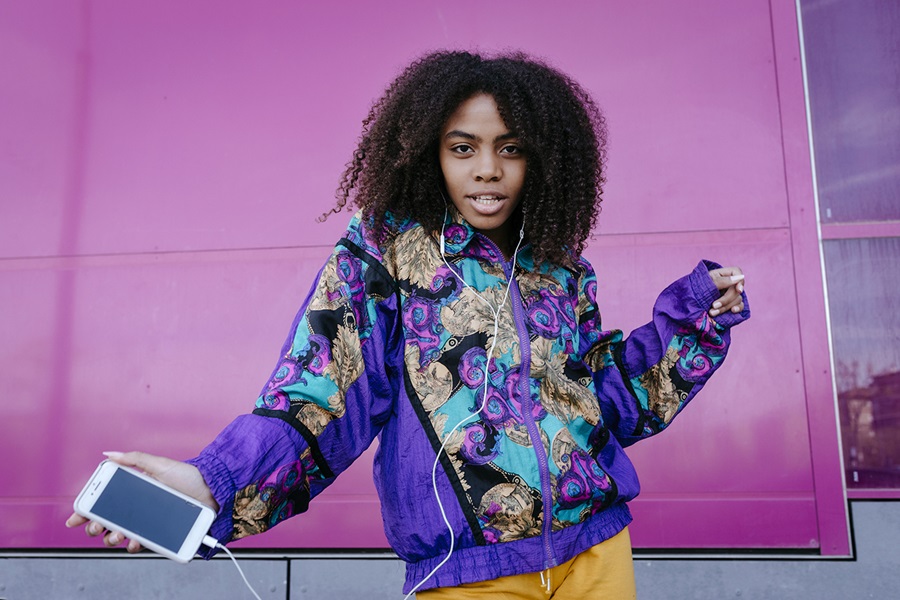"In the dynamic landscape of UK fashion, many narrative threads are being re-woven, ushering in a new era where sustainability, inclusivity, and individuality will take centre stage."
It's hard to be out of fashion these days. In an era where anything goes and everything is instantly available, the big topics of interest have shifted from seasonal style predictions to more socially pertinent issues like inclusivity, sustainability and the importance of identity.
The word trend is used a lot in fashion but within this context it implies something fleeting and ultimately replaceable. The three issues above go beyond the catwalk and instead capture the increasing power that we all wield as we fight back against the historically exclusive, ageist and sizeist world of fashion.
As we dissect these issues further, it’s clear that there is tension between consumer behaviour, retailer strategies, and social media influencers, all of whom have a platform to showcase their contrasting perspectives.
The Consumer, The Influencer, and The Brand Retailer walked into a bar…
I’m not sure what the punchline is but the retail battleground is clear. Despite rising production costs, high street brands seem to now offer constant discounts as they try and compete with the consumer led re-sale platforms where you can often find a ‘new with tags’ version of this season’s coat for a fraction of the price. This continuous cycle of promotion only serves to commoditise brands by diluting their meaningful difference and is clearly not a viable long-term strategy.
Meanwhile, the influencer war is waging between mainstream consumers and the eco -contingent. Instagram and Tiktok are full of vintage clad thrifters and makers, shouting down the big, bad, fast fashion companies, yet these platforms are equally awash with home videos of Primark and Shein ‘hauls’ where vast piles of clothes are unboxed and tried on, demonstrating how far a spend of £50 can go.
It’s hard for genuinely sustainable fashion brands to become mainstream given the price points tend to be higher and the ranges smaller, but there are some notable exceptions such as jumpsuit experts Lucy and Yak, who in addition to being all about slow processes, have also started to upcycle older garments and re-sell them. Similarly Nudie Jeans will mend any holes for free or offer discounts off a new pair if you trade in your old jeans.
What I think we can all agree on is that consumers are more price savvy than ever and you only need to search social media for ‘steal vs splurge’ and ‘brand dupes’ to see that grabbing a bargain is as a relevant as ever, whether it’s a high street copy, a pre- owned version, an upcycled one of a kind, or a designer item from last season.
Let’s unpick some of these themes a bit further:
Pre-loved: Bridging the say-do gap or accidentally sustainable?
There’s no doubt that sustainable fashion has found its voice, resonating with a growing audience concerned about the environmental impact of their choices. Yet, there remains a gap between what consumers say they want and what they actually do, as evidenced by the continued popularity of fast fashion giants like Boohoo and Shein who have both been called out for their unethical processes. In fact, Shein were the 5th most valuable global brand in our annual BRANDZ ranking with around 17.4 million average monthly searches and a 5818% long growth (growth across 2 years) as indicated on Kantar’s TrendEvaluate dashboard, highlighting that consumer demand is still very much driving their success.
Alongside this, the rise of re-sale platforms like Vinted and Depop has been instrumental in the re-brand of second hand to pre-loved, throwing off the emotionally loaded shackles of hand me downs and the musty odours of charity shops. What’s more, unlike in a charity shop where the item’s history is unknown, Vinted allows the seller to tell the backstory with ‘worn once’ or ‘bought but really needed the next size up’, the accompanying narrative delivering a marker of quality and increased sense of bargain.
Whilst the sustainability element is clear, how pure are our motives for selling? Is sustainability simply an accidental by product? It only takes a quick trawl through Vinted to see it’s not all pre-loved. In fact, it’s often not loved at all. What these platforms also do is provide a space for individual cash generation and a second chance for vindication. Bought something on a whim that you’ve never worn? No problem, now you can re-sell and assuage some of that guilt. Therefore, whilst the outcome is virtuously circular, the intent is often more about clawing back some of the initial expenditure.
What it does mean though is that fast fashion, re- sold and with its life extended, starts to take on some of the qualities of slow fashion. Its longevity is no longer determined by its price point or manufacturing ethics. It’s about how you wear and assign value to an item, regardless of its origin story. With Shein, Boohoo, and Primark items prominent on Vinted, Fast fashion worn slow is becoming something of a mantra by those not wanting to dive full time into the world of thrifting.
Inclusivity – The four ‘isms’ making waves:
Fluidity is present everywhere in society as we talk in less binary terms about who we are. We don’t have to be either young or old, male or female, or indeed a perfect size 10. Identity and inclusivity are closely bound together as we (slowly) move towards a world where we are all free to be our true selves. As such, the fashion industry is witnessing a rebellion against ableism, ageism, sizeism, and sexism. Retailers are being called out for their inaction or lack of representation and whilst it’s mostly smaller independent brands driving inclusivity, we are starting to see the impact more widely.
Brands like Good American, recognising that body shapes can fluctuate on a regular basis, are leading the way with innovations such as jeans that stretch up to 4 sizes. Other premium brands like ME+ EM are acknowledging this with adjustable waistbands whilst the high street has more ‘one size’ items that simply create a different fit depending on your body shape and can be cinched in where required. Never Fully Dressed is an example of an independent UK brand born out of the desire to create versatile looks with a single item that is often draped and therefore designed to fit a wide range of bodies. At a lower price point, ASOS have also been quick to showcase quirky, streetwear inspired gender inclusive brands where the same items are shown modelled on male and female bodies.
Inclusivity can also be demonstrated in rudimentary ways – women’s clothes especially dresses and skirts don’t come with pockets as standard, a regularly cited bugbear. Furthermore, we still see articles such as ‘best coats for women over 40’ as if the tipping point to a new decade suddenly dictates a new set of shopping and style rules. These highlight that small changes can make a big difference and move everyone further along the adoption curve.
Finally, when it comes to ableism, we’ve seen easy access clothing designed for breastfeeding and there are also brands that specialise in sensory friendly clothing – a growing area as the neuro divergent population are finally represented with label and seam free apparel. Despite the progress, this is definitely the least explored area and one that is ripe for further development.
You are what you wear: The role of Identity
In a world of 'dupes', Pinterest, and online fast fashion, the gap has closed between the haves and the have- nots. Anyone can access designer styles, whether it’s the real deal or a legitimate copy. It should therefore be easier than ever to carve out the identity you want. Except it isn’t. With there being fewer short-term trends to latch onto, there is more pressure on people to develop and define their own personal style, something which can be challenging, especially in a post pandemic world where dress codes have been irrevocably altered and many have struggled to find their style voice in this new landscape.
This lack of identity in the real world is at odds with the online universe where there is freedom, and empowerment in creating your avatar of dreams, the you that never actually has to leave the house and enter the real world. There is a reason why avatars tend to represent our projected fantasy selves rather than the more sanitised version that we style each day. Online, there are no ‘norms’, no ‘isms’ and dressing our cyber body doesn’t involve the stress of shopping or the perceived judgement from others.
Are we therefore witnessing a new era where style confidence, individuality, and identity is shifted more towards the online space? According to celebrity stylist Rachel Zoe 'style is a way of saying who you are without having to speak'. How we choose to present ourselves to the world says so much about how we spend our time, what we value, our preferences, and the energy we exude. As younger generations spend more time online, how do they start to align their virtual personas with their real ones and what does this mean for the future of fashion?
In summary: What does this all mean for you?
The journey ahead is one of continual evolution and the topics discussed will be integral components of a more conscious and diverse fashion landscape. Ultimately, fashion remains a canvas for self-expression that transcends age, size, societal norms and even worlds.
As these different intersections collide, it can be hard to prioritise the direction in which to take your brand. What’s clear is that fashion marketers and Insight teams hold the power to become the change agents and show up for the people they represent. Whether it’s luxury or mainstream, how brands connect with people on the issues above will determine their future success.
Connect with us to discover what consumers seek in this domain and how your brand can engage with them meaningfully. Click here to download our latest report on Fashion in our Finding the Future Series.
Jodie Gillary is Head of Client Impact at Kantar and also a certified Personal Style CoachTM. In 2023 she published the book ‘How to stop spending money you don’t have on clothes you don’t wear’ which applies the principles of brand building to wardrobe management.


